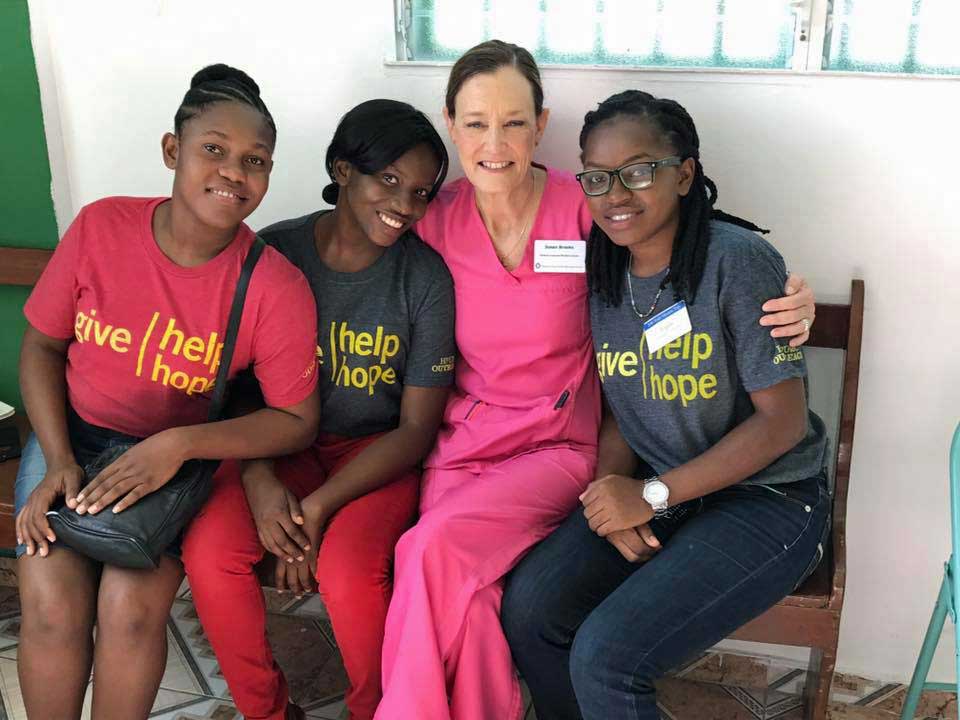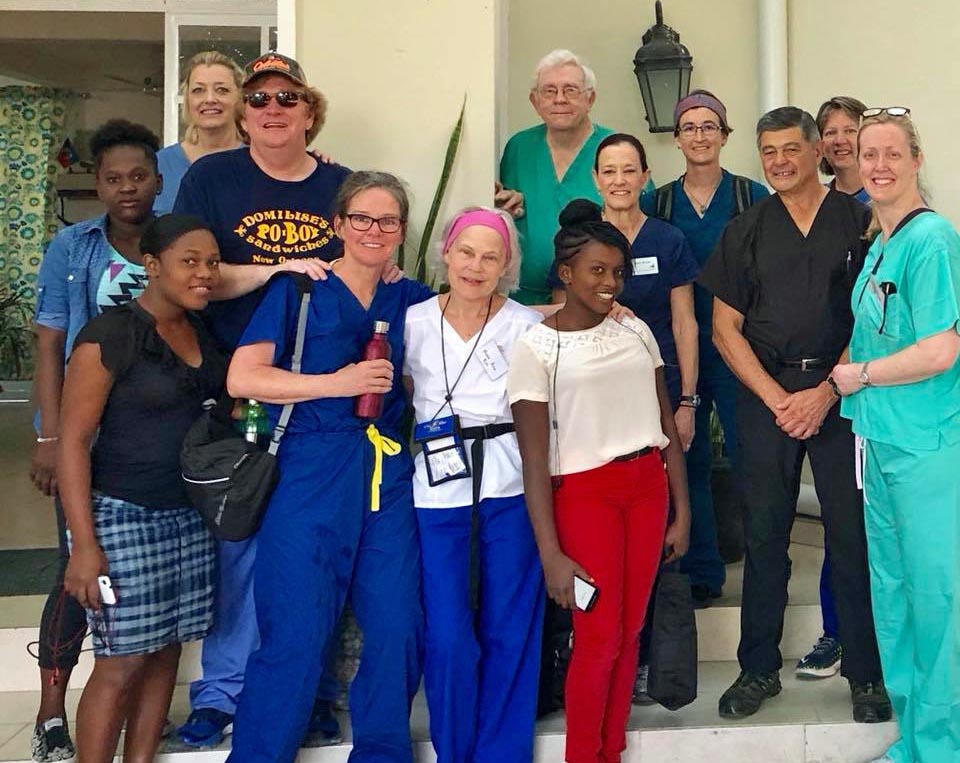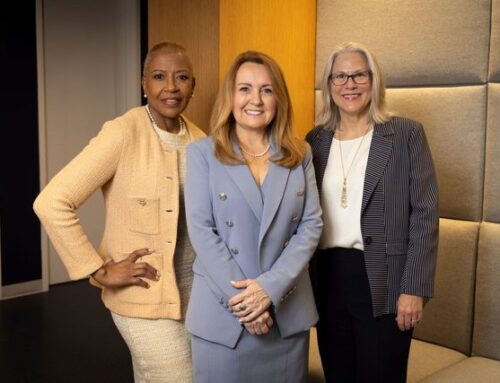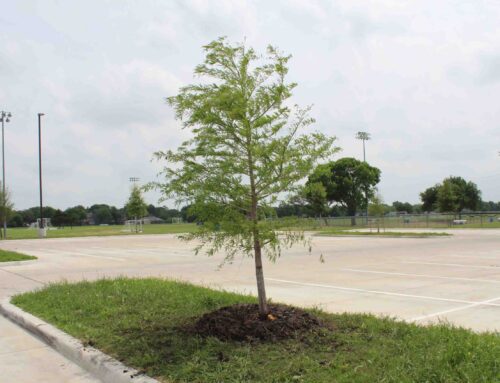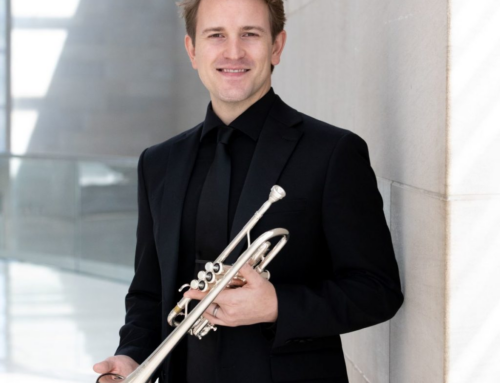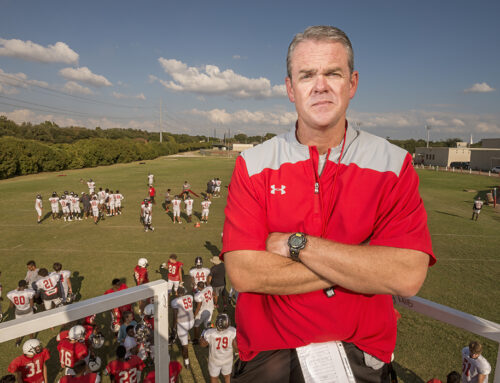After the 2010 earthquake in Haiti, many assumed Highland Park United Methodist Church’s mission work there was finished. Begun more than 40 years ago by Dr. Otto Willbanks and continued faithfully by Lake Highlands residents Dr. Kenneth and Lila Foree, the project came to a forced halt when a 7.0 quake killed an estimated 160,000 people and caused the clinic’s roof to collapse on church workers. Dr. Foree, a former Chief of Opthamology at Baylor, was seriously injured, and team member Jean Arnwine died of her injuries.
Presenting LH’s Susan Willbanks Brooks and her sister, Caroline Willbanks Hazlett, with the Georgia Bates Award for selfless service, Committee Chair Diana Miller recognized that their work to restart their father’s mission has brought – and will bring – access to life-changing medical care for thousands.
HPUMC’s Rev. Paul Rasmussen also praised Brooks and Hazlett, admitting some church members were ready to abandon the project.
“We certainly had voices that said, ‘It’s too dangerous. Let’s just relocate and go somewhere else.’ Others said, ‘The fact that it’s so dangerous and so devastated is precisely why we must go.’”
When Dr. Willbanks imagined the Haiti mission with Rev. Ken Dickson and Rev. Leighton Farrell in 1976, they recognized the great resources of HPUMC and intentionally sought the neediest people in the world to help. Haiti fit that bill, and devastating poverty continues there today.
“When the Forees exhibited the profound strength and faith to say, ‘We [as a church] have to go back,’ that was it,” recalled Rasmussen. “The Forees’ stamp of approval really moved the needle.”
Dr. Foree’s injuries, though, meant the project needed new leadership. Rev. Mark Craig approached the late Dr. Willbanks’ two daughters, Caroline Hazlett and Susan Brooks.
“I wasn’t sure this was in my wheelhouse,” admitted Brooks, “but no one says no to Mark Craig.”
Under the direction of Brooks and Hazlett, the clinic was rebuilt and reopened in 2014. Now called The Siloe Clinic, services have expanded to include pediatrics, general medicine, dermatology and dental care in addition to eye surgery and care. The addition of a women’s clinic was a big step, they say, since most of their female patients have never seen an OB/Gyn.
“Susan and Caroline’s legacy and their namesake, in addition to their authentic commitment to their father’s work, just spread throughout the whole congregation,” said Rasmussen. “This is a multigenerational church, so the legacy of prior generations sets the bar. I don’t know that we couldn’t have done it without them – this church has a lot of great leaders. But I wouldn’t have wanted to try.”
Six mission trips to Haiti are planned for 2018, and as usual, the Willbanks sisters will go on them all. It’s estimated that 21,000 patients were seen in 2017 – 7,000 by American teams and 14,000 by Haitian professionals. Brooks and Hazlett say their goals are for the people of Haiti to become self-sufficient, for the clinic to generate income to be self-supporting, and for the Haitians to receive affordable and life-changing care.
And it’s not just HPUMC sending teams of volunteers. Churches all over the country have participated by supporting in various ways.
“One of the things we’ve always tried to do here, missionally, is to take what we’re doing and spin off some momentum to other churches,” says Rasmussen. “That’s certainly been the case with this, because there’s a great number of people in healthcare that really have a servant’s heart but their churches might not have the infrastructure. So we’re thrilled when other churches want to partner – it just expands the amount of care we can do.”
If you’d like to help, you can learn more here. The Haiti Partnership is always in need of medical volunteers, but non-medical helpers – and/or their donations – are gleefully accepted. The project also seeks gently used eye glasses, artificial tears eye drops, toothbrushes and multi-vitamins.

